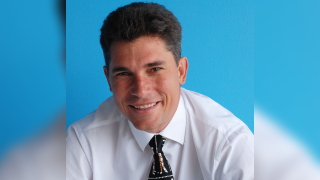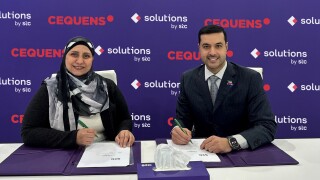Q. Can you give us an overall update on Telxius’s recent achievements?
Over the course of 2019, Telxius made many advancements towards the goal of enabling global communications for organizations. Through increased infrastructure developments, new partnerships and collaborations, and new connectivity options, Telxius is committed to building flexible solutions for business across the entire global communications ecosystem.
Last June, we announced a collaboration with América Móvil to deploy a new ultra-high capacity undersea cable in Latin America as part of our shared commitment to improve global communications. The new system´s initial capacity will be 108 Tbps, with six fiber pairs and the lowest latency from Guatemala to Chile and will be the first undersea cable to be built connecting these two regions since 2001, boosting communication services in the Pacific Latin American region. The 7,300 km cable, set to be fully operational by the end of 2020, will serve the entire Pacific coast of South America with the highest levels of service reliability and security.
Very important in 2019 has been the launch of our Derio Communications Hub, a carrier neutral infrastructure located only a few kilometers away from MAREA’s landing station, that has been developed to respond to the growing demand of latest generation communication services leveraging MAREA’s capabilities: the lowest latency and the highest capacity ever deployed between America and Europe. Derio opens up a wide range of business opportunities for global companies and maps Spain as a strategic communications port linking the Americas, Europe and beyond and connecting securely and dynamically to important international hubs such as Marseille, Paris, London and Frankfurt.

This year we have also started a collaboration with EllaLink to enable European traffic to reach Rio de Janeiro, São Paulo and other key cities in Brazil and across Latin America. At the same time, BRUSA, with landing points in Brazil (Rio de Janeiro and Fortaleza), Puerto Rico and Virginia Beach (USA), opens up a wide range of connectivity opportunities from Latin America to the US and to Europe via MAREA.
Q. Back in December, Telxius announced that it had established commercial presence in Northern Virginia. What does this mean for your customers and partners?
To service MAREA and BRUSA, two of the world’s highest-capacity subsea cables, Telxius chose Virginia Beach as the site to build the first transatlantic Cable Landing Station (CLS) Campus in the Mid-Atlantic region over two years ago. From this CLS Campus, these cables have a direct backhaul to Ashburn and Richmond, which enables us to enhance our communications capabilities in the United States. The new Telxius headquarters in Northern Virginia will allow us to be closer to our local customers, partners and be better able to collaborate with the growing population of high-tech companies in the region. Additionally, establishing a commercial presence in Northern Virginia, the leading data center market in the world will allow us to better serve our customers and create many new business opportunities globally.
Q. What about Europe, what are the key Telxius collaborations that will enable communications between Europe and Latin America?
Recently we have announced a collaboration with Orange in Europe and the United States on backhaul extensions for the Dunant cable, a Google project. Under this agreement, Orange and Telxius offer co-location services at their respective Cable Landing Stations in Saint-Hilaire-de-Riez (France) and Virginia Beach (US). Both are strategic locations as they are situated near main connectivity hubs on both sides of the Atlantic.
This collaboration represents a strong transatlantic bridge as both companies can effectively provide multi-terabit capacity on this Europe-US route, supporting the development of new digital usages for our international customers in Europe and America. This 6,600-km-long transatlantic cable will connect the United States to the French Atlantic coast and aims to launch services in late 2020.
In addition, Telxius is opening up opportunities for global organizations to leverage our MAREA subsea cable, the lowest latency and the highest-capacity subsea cable ever deployed between the United States and Europe, with the launch of our Derio Communications Hub. Located only a few kilometers away from MAREA’s landing point, Derio is a carrier neutral infrastructure that has been designed with open architecture to ensure that every carrier, hyperscaler, cloud and content provider is able to benefit from its offerings. With rich interconnection capabilities, this highly specialized communications hub has been developed to respond to the growing demand of latest generation communication services and will unlock a wide range of business opportunities for customers looking for cutting-edge communication solutions.
The aforementioned collaboration with Ellalink is also important at this respect, enabling European traffic to reach key cities in Brazil.
Q. With the current trend to ‘go-green’, what can we expect to see in current and upcoming facilities?
Fortunately, there is definitely a growing demand to help conserve energy, we are making that a priority for 2020. Across all of our operations, we are looking to find ways to increase sustainable practices. The Derio Communications Hub, for example, will meet the latest environmental standards. It is certified as a 100% renewable energy building with free cooling.
Q. What are your strategic priorities for Telxius in 2020?
In 2020, Telxius will remain focused on contributing to the global communications ecosystem seeking for new alliances and new connectivity that allow us to keep enabling communications to enterprises globally. In terms of projects, the Pacific subsea cable in Latin America, in collaboration with América Móvil, is set to be fully operational by the end of this year. You can also expect to hear more about how organizations are able to leverage the Telxius subsea cables and connected facilities, such as the Derio Communications Hub and the Northern Virginia CLS Campus, to leverage the best service and latest technology for their business.
Overall, our commitment is to continue improving the existing global communication infrastructure, reaching and connecting more geographies, partnering with more and new strategic players and contributing to the development and enrichment of both existing and new communication hubs.
Check out our interactive map for detailed information about our network. You can also follow Telxius on LinkedIn to find out more about the latest projects and developments and connect with Rafael, here.





